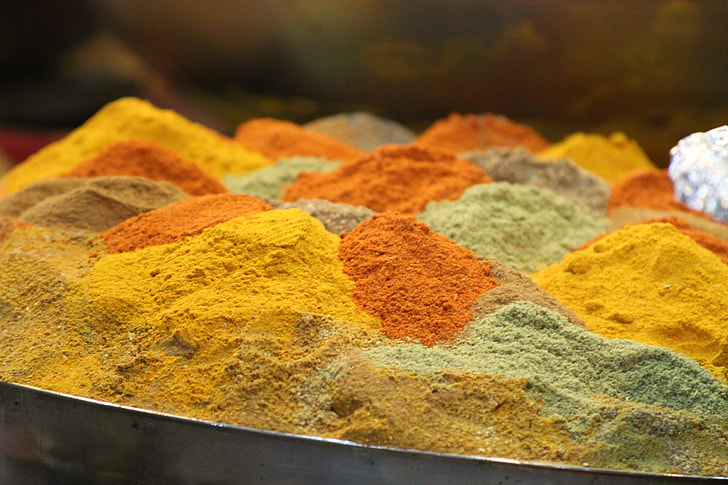
Let's discover the real flavours: All the dishes of Tunisia
Without doubt, immersing oneself in Tunisian cuisine is tantamount to embarking on an unparalleled sensory journey. The typical dishes of this ancient land represent more than just combinations of ingredients: they are an explosion of vibrant colours, enveloping aromas and bold flavours that mingle to create a culinary symphony that faithfully reflects the rich history and unique culture of this fascinating nation.
In the following article, we explore in detail some of the iconic dishes of Tunisian cuisine, ranging from the bustling streets of markets to traditional restaurants. Get ready for an experience that will stimulate all your senses and make you appreciate Tunisian cuisine in all its splendour.
The Couscous
Tunisian couscous is more than just a dish: it is a work of culinary art and a testimony to traditions handed down from generation to generation. This culinary symbol combines steamed wheat with meat, vegetables and spices in a symphony of flavours. Its complexity reflects Tunisia’s culture and history.
The succulent meat, crunchy vegetables and aromatic spices create an unparalleled sensory experience. However, couscous is also an art of connection, linking the past with the present through its preparation. Each forkful tells a story of trade and cultural influences. This dish is not just food, but a narrative of the past and a cultural imprint that brings Tunisia’s unique and memorable flavours to life.
The Brik
Tunisian cuisine celebrates a myriad of seafood delicacies, especially along the coast. Among the specialities, the Brik stands out as a crispy pastry filled with egg, parsley and tuna, embodying a unique balance of flavours. Another gem is the Grilled Loup de Mer, the grilled sea bass, which brings a freshness straight from the Mediterranean. The culinary artistry manifests itself through the combination of ingredients and flavours, capturing the essence of the sea in succulent dishes.
Brik, with its golden shell and juicy filling, is a symbol of tradition and creativity, while grilled sea bass is an ode to the simplicity and authenticity of freshly caught fish. In both cases, coastal cuisine reveals the ability to exploit marine resources, creating gastronomic experiences that evoke the enchantment of the Mediterranean and leave an indelible mark on the hearts and palates of those who savour its delicacies.
Tajine
The Tunisian Tajine is a culinary work in which spices take centre stage, combining meat, vegetables, eggs and cheese cooked slowly in an earthenware pot. This dish represents Tunisian cuisine in all its complexity, offering a unique combination of flavours and aromas.
The preparation, which may also include lamb, makes the dish sweet and sour, reflecting the variety of culinary tradition. Each bite is a multi-sensory experience, witnessing generations of passion and experimentation.
The Olives
Many people don’t know it, but a particularly valuable product is olives, of which Tunisia is one of the world’s leading producers (along with Italy) and which are an integral part of Tunisian cuisine. They are processed in various ways and range from extra virgin olive oil to marinated olives, the latter being a real delicacy and often served with freshly baked bread.
Spices
Another very important and practically always present product are spices, which also play an important part in Tunisian cuisine. We can find Harissa, which is a paste of red chilli, garlic and spices, as an iconic condiment that is used to add a spicy note.
Besides Harissa, there are many other spices and preparations that characterise Tunisian cuisine:
- Ras el Hanout: A mixture of spices that can include over 20 different ingredients, such as cumin, cinnamon, coriander and cardamom. It is often used to flavour meat dishes, rice and couscous.
- Bzaar: A traditional spice mixture, similar to Ras el Hanout, but with a different combination of ingredients. It is often used to flavour soups and stews.
Sweets
The conclusion of the Tunisian culinary discovery leads us to the delicious desserts that enrich the gastronomic panorama of this nation. Among these are the Makrouds, true gourmet gems: small fried sweets combining dates and semolina flour. These sweet and crunchy morsels are an explosion of natural sweetness and a joy to the palate, evoking the artisanal tradition of Tunisian cuisine.
But Tunisian culinary creativity does not stop there. Bamia, okra cakes, an unusual ingredient, in sugar sauce create such a play of contrasts between the soft texture of the okra and the enveloping sweetness of the sugar sauce that they are a true culinary masterpiece.
Conclusion
Tunisian food is an authentic celebration of diversity, tradition and culinary creativity. From the enveloping aromas of spices to the surprising combinations of ingredients, each dish tells a story of passion, history and conviviality. Tunisian cuisine is a journey across cultures, an encounter with unique flavours and an experience that satisfies both palate and soul. From coastal delicacies to mouth-watering desserts, each dish is an ode to variety and generosity. So, if you want to explore the heart and soul of Tunisia, there is no better way than through its food. Savour, discover and immerse yourself in this palette of flavours that embodies the very essence of the country. Enjoy your culinary journey!
For updated information, click here.
To read our other articles, click here.




